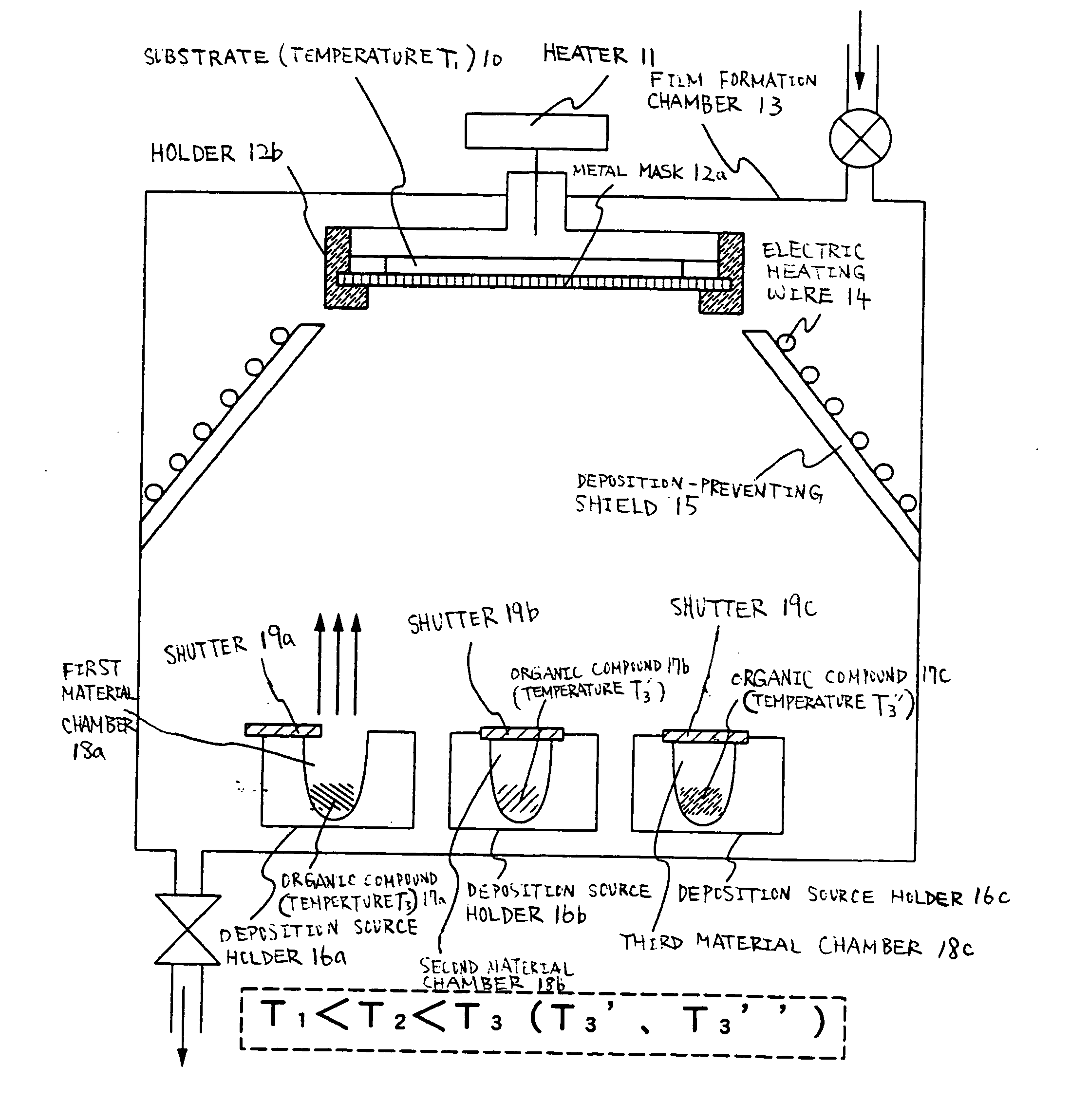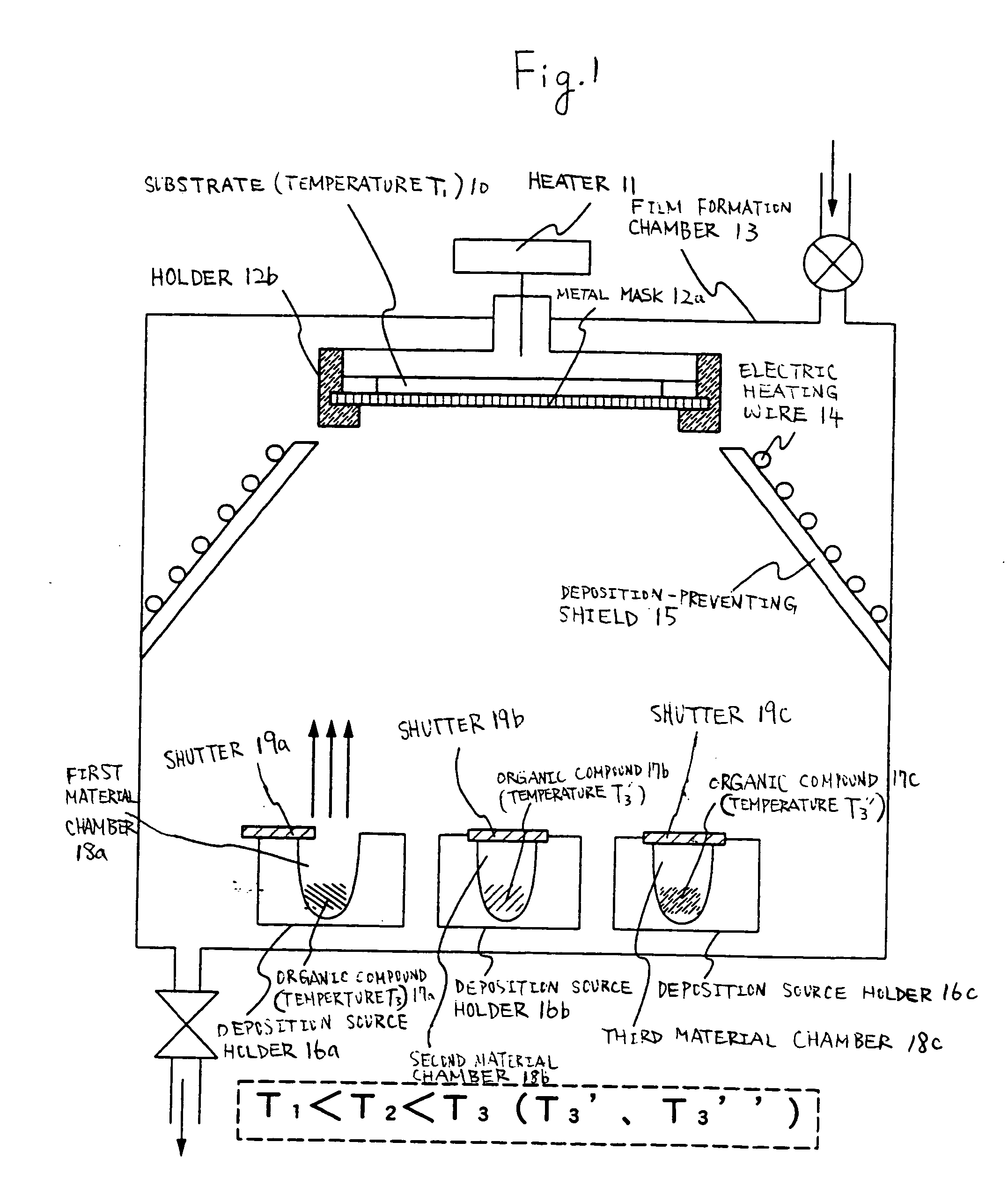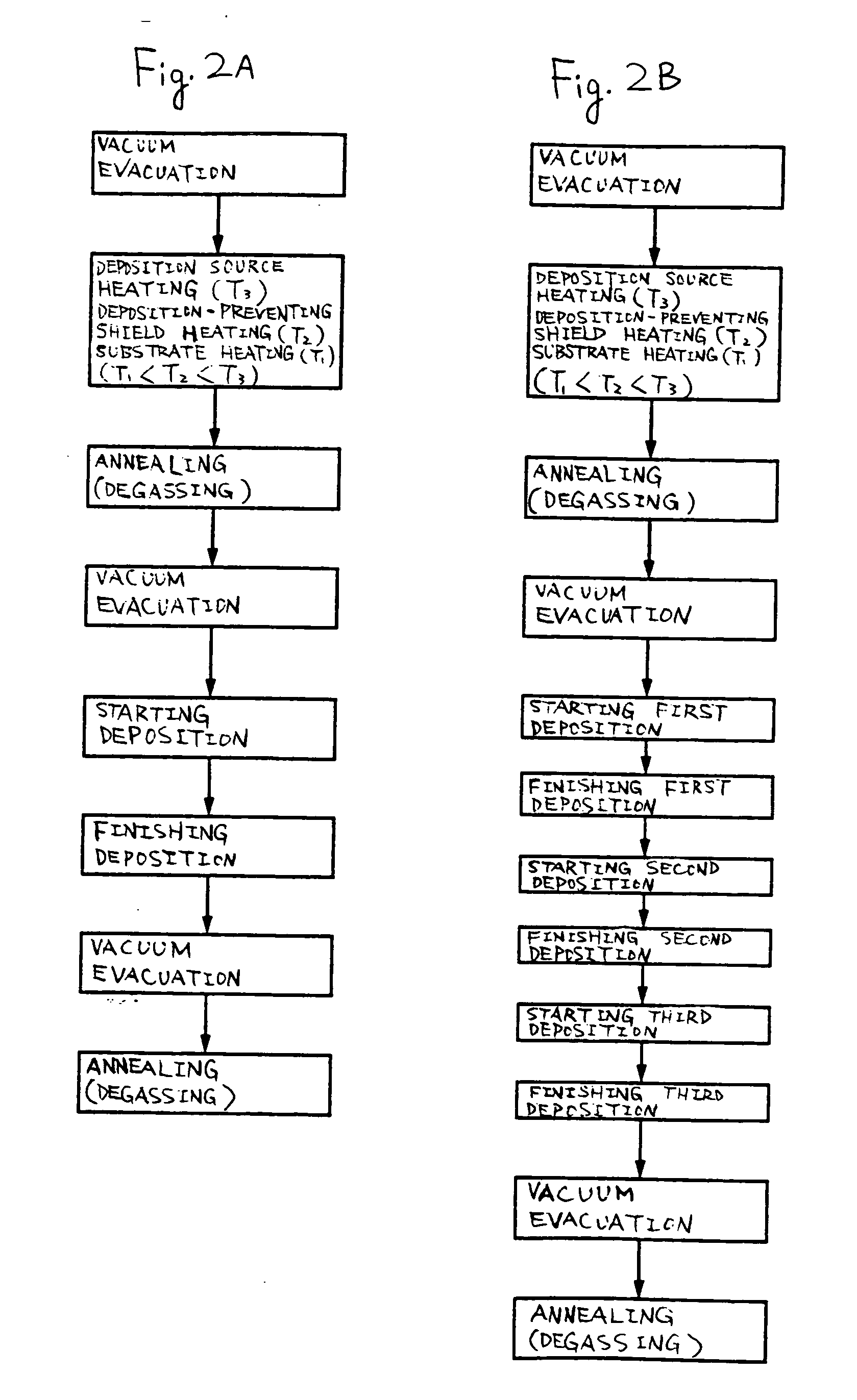Film formation apparatus and film formation method and cleaning method
a film formation apparatus and film technology, applied in the direction of solid-state diffusion coating, plasma technique, vacuum evaporation coating, etc., can solve the problems of affecting the el layer deterioration, insufficient life of the element, and deterioration of the el layer, so as to prevent the dispersion of excited molecules of the dopant, the effect of enhancing the re-coupling efficiency of the carrier
- Summary
- Abstract
- Description
- Claims
- Application Information
AI Technical Summary
Benefits of technology
Problems solved by technology
Method used
Image
Examples
embodiment 1
[0058] The constitution of a film formation apparatus of the invention will be described with reference to FIG. 1. FIG. 1 is one example of a cross-sectional view of the film formation apparatus of the invention.
[0059] At the time of forming a film by a deposition method, a face down method (referred to as a depositing-up method in some cases) is preferable and a substrate 10 is set in a manner that the face to form a film thereon is face down. The face down method is a method by which a film is formed while the face to form film of the substrate being kept face down and in such a method, adhesion of dust or the like can be suppressed.
[0060] As shown in FIG. 1, a heating means, in this case a heater 11, is installed adjacently to the substrate 10. By the heating means, the temperature (T1) of the substrate can be heated to 50 to 200° C., preferably 65 to 150° C. Further, a metal mask 12a fixed in a holder 12b is installed under the substrate 10 and deposition source holders 16a to...
embodiment 2
[0100] Here, a film formation apparatus different from that of the embodiment 1 is illustrated in FIG. 3.
[0101] As shown in FIG. 3, an example in which a heater furnace 31 and a cleaning preparatory chamber 22 are installed while being connected to a film formation chamber 33 will be described.
[0102] The heater furnace 31 for heating a substrate is made capable of carrying out annealing treatment by installing a heater in the outside. By the heater furnace 31, the temperature (T1) of the substrate is controlled to be 50 to 200° C., preferably 65 to 150° C. Further, a gate or a shutter shown as a dotted line in FIG. 3 is installed between the heater furnace 31 and the film formation chamber 33. Although it is not illustrated, a vacuum evacuation means may be additionally installed in the heater furnace 31. In this embodiment, after annealing is carried out in vacuum by the heater furnace 31 before deposition, the deposition is carried out by opening the gate.
[0103] Further, laser ...
embodiment 3
[0114] The constitution of another film formation apparatus of the invention will be described with the reference to FIG. 13. FIG. 13 shows an example of a cross-sectional view of another film formation apparatus of the invention.
[0115] As shown in FIG. 13, an example in which plasma 1301 is generated between a deposition mask 1302a connected to a high frequency power source 1300a through a capacitor 1300b and an electrode 1302b will be described.
[0116] The deposition mask 1302a fixed in a holder is installed adjacently to the portion (the portion shown by the dotted line in the figure) where a substrate is to be installed and a deposition source holder 1306 capable of heating at respective temperature is installed under it. A deposition source is installed on the opposite to the substrate.
[0117] Further, a material chamber 1308 is a space of the deposition source holder 1306 made of a conductive metal material and when the organic compound 1307 in the inside is heated to the sub...
PUM
| Property | Measurement | Unit |
|---|---|---|
| pressure | aaaaa | aaaaa |
| temperature T1 | aaaaa | aaaaa |
| temperature | aaaaa | aaaaa |
Abstract
Description
Claims
Application Information
 Login to View More
Login to View More - R&D
- Intellectual Property
- Life Sciences
- Materials
- Tech Scout
- Unparalleled Data Quality
- Higher Quality Content
- 60% Fewer Hallucinations
Browse by: Latest US Patents, China's latest patents, Technical Efficacy Thesaurus, Application Domain, Technology Topic, Popular Technical Reports.
© 2025 PatSnap. All rights reserved.Legal|Privacy policy|Modern Slavery Act Transparency Statement|Sitemap|About US| Contact US: help@patsnap.com



